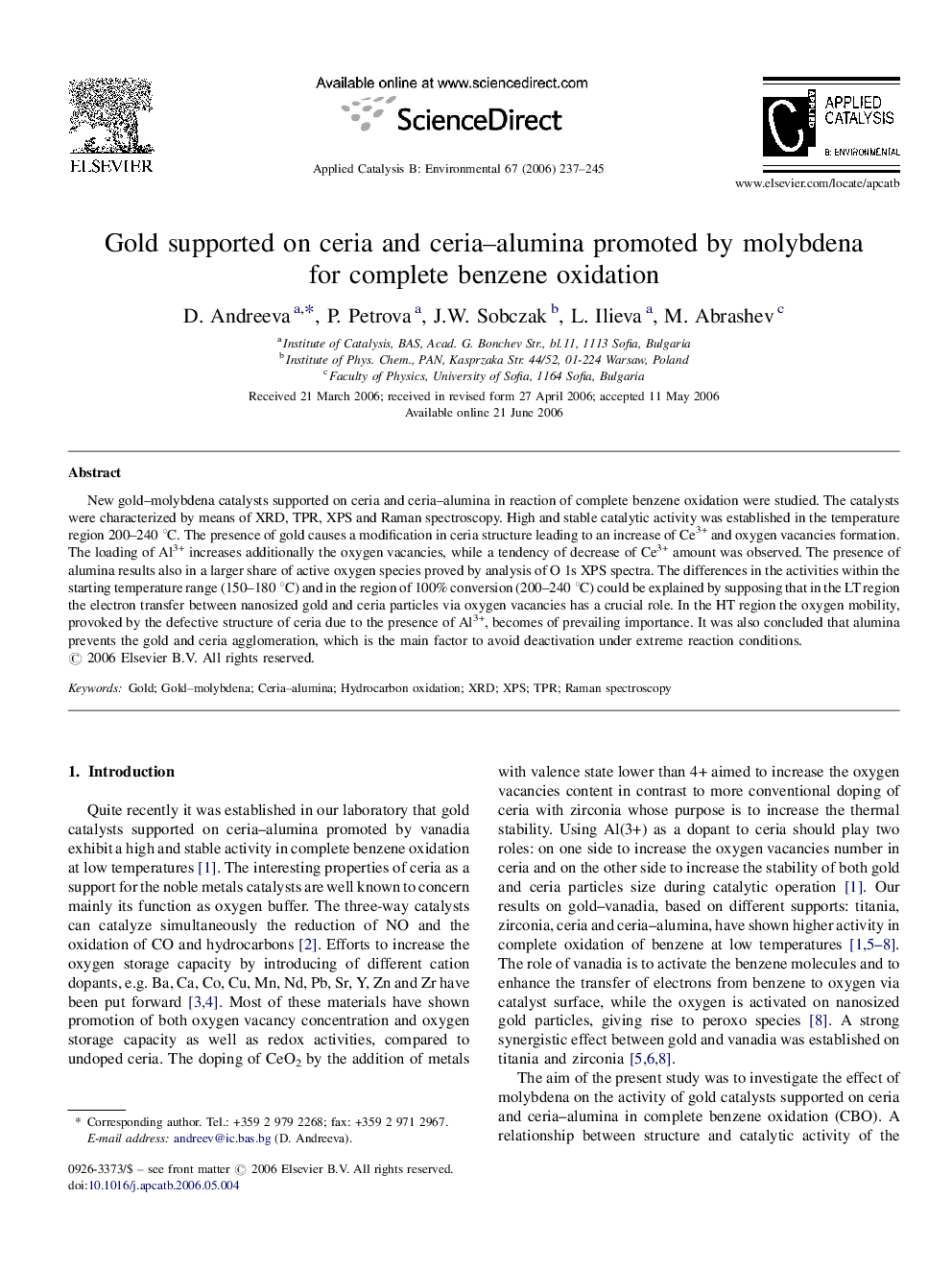| Article ID | Journal | Published Year | Pages | File Type |
|---|---|---|---|---|
| 48866 | Applied Catalysis B: Environmental | 2006 | 9 Pages |
New gold–molybdena catalysts supported on ceria and ceria–alumina in reaction of complete benzene oxidation were studied. The catalysts were characterized by means of XRD, TPR, XPS and Raman spectroscopy. High and stable catalytic activity was established in the temperature region 200–240 °C. The presence of gold causes a modification in ceria structure leading to an increase of Ce3+ and oxygen vacancies formation. The loading of Al3+ increases additionally the oxygen vacancies, while a tendency of decrease of Ce3+ amount was observed. The presence of alumina results also in a larger share of active oxygen species proved by analysis of O 1s XPS spectra. The differences in the activities within the starting temperature range (150–180 °C) and in the region of 100% conversion (200–240 °C) could be explained by supposing that in the LT region the electron transfer between nanosized gold and ceria particles via oxygen vacancies has a crucial role. In the HT region the oxygen mobility, provoked by the defective structure of ceria due to the presence of Al3+, becomes of prevailing importance. It was also concluded that alumina prevents the gold and ceria agglomeration, which is the main factor to avoid deactivation under extreme reaction conditions.
